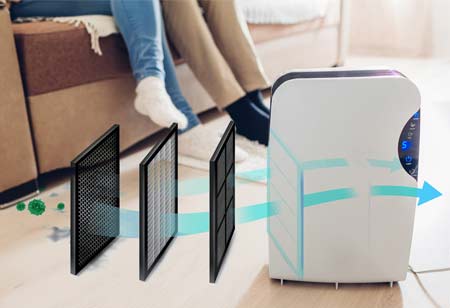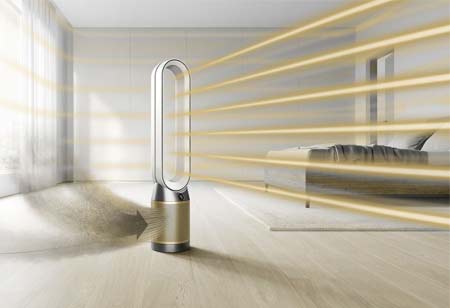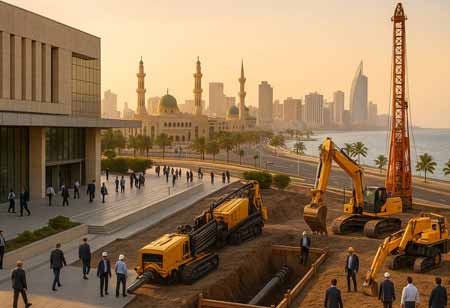THANK YOU FOR SUBSCRIBING

Why Buy Nitrogen Gas When you can Make it!
Phil Green, Market Development Manager - Industrial Gas Generation, Gas Separation and Filtration Division Emea, Parker Hannifin Manufacturing Limited, United Kingdom

 Phil Green, Market Development Manager - Industrial Gas Generation, Gas Separation and Filtration Division Emea, Parker Hannifin Manufacturing Limited, United Kingdom
Phil Green, Market Development Manager - Industrial Gas Generation, Gas Separation and Filtration Division Emea, Parker Hannifin Manufacturing Limited, United KingdomNitrogen is the second largest industrial gas product consumed by industry globally and accounts for over $15 billion USD sales annually. Most nitrogen is produced by the cryogenic distillation of air in huge air separation units (ASU’s) that also create liquid oxygen and argon as a by-product. This “liquefaction of air” technology was first developed by German entrepreneur and industrialist Carl von Linde in the early 1900s.
Although not a true noble gas, nitrogen is considered inert and is used in a multitude of applications, to displace ambient air and create an oxygen free environment. Excepting liquid nitrogen used for cryogenic purposes, gaseous nitrogen can be categorised into four main applications that are used to prevent or reduce:
1) Microbial/oxidative spoilage mechanisms, within food and beverage products.
2) Rapid oxidation such as combustion or explosion.
3) Slow oxidation for example of chemicals, plastics, and metals.
4) Oxygen permeation through polymers and rubber, typically aircraft tire inflation and plastic bottles.
Products that we all consume and use every day, very often involve the use of nitrogen in their manufacturing process at some stage. Typically, but not exhaustively - potato chips, nuts, milk powder, coffee, spices, beer, cider, and wine are all produced and or packaged in nitrogen gas to preserve aroma, taste, appearance and increase shelf life, and reduce wastage.
Active pharmaceutical ingredients, synthetic human insulin and chemotherapy drugs are produced using pharmacopoeia compliant nitrogen gas. Components for vehicles, planes, yachts, washing machines, wind turbines, refrigerators, air conditioning and electronics, have either been laser cut, soldered, injection moulded, 3D printed, purged, heat treated, autoclaved, recycled. and blanketed with nitrogen to prevent oxidation, during manufacture. Even the aircraft we board - to take a well-deserved vacation or vital business trip - have nitrogen in the tyres, nitrogen pressurized undercarriage struts, and some even have onboard nitrogen generators to blanket the fuel tanks.
Traditionally, users of nitrogen gas source it from an industrial gas company in high-pressure cylinders, portable liquid mini tanks, or bulk liquid vessels. The liquid supply options require the gas to be evaporated from the liquid phase before use. The equipment to store or evaporate the nitrogen is then rented and cylinders replaced or liquid re-filled, typically charged on a cost per cubic metre or liquid litre basis, as required, via truck-based deliveries.
An alternative to buying gas in this format is to make it yourself, utilizing nitrogen gas generation technology on your premises. Unlike cryogenically produced nitrogen that relies on the different liquefaction temperatures of the three main gas species that constitute ambient air – nitrogen (-195.8°C), oxygen (-183°C), and argon (-185.8°C); nitrogen gas generation uses molecular separation at normal ambient temperatures.
There are two main principles of molecular gas separation that use standard, oil-lubricated factory air compressors as the feedstock. Firstly, hollow fibre membrane technology uses polymer tubes that permeate medium and fast gases such as oxygen and water vapour while retaining nitrogen. Secondly, pressure swing adsorption (PSA) utilizing carbon molecular sieve (CMS) to absorb and desorb oxygen under pressure cycling, venting the waste gases to the atmosphere.
" One of the key differences between cryogenically produced and on-site generated gas is the ability for the gas generation to vary the maximum remaining oxygen content to suit the application "
One of the key differences between cryogenically produced and on-site generated gas is the ability for the gas generation to vary the maximum remaining oxygen content to suit the application. As you can imagine, the energy required to liquefy air is far greater than producing the gas at ambient temperature through molecular separation. In addition, the more oxygen that is acceptable in the output gas stream, the lower the compressed air usage and hence energy and unit gas cost.
In reality, few applications require the exceptionally low oxygen content typical of cryogenically produced nitrogen, in the region of 10ppm. Food grade nitrogen as written into European statute EU231/2012, for use as a food additive, E941, specifies an oxygen content of <1% while fire and explosion prevention, need only 3% - 5% purity to be completely safe.
How can On-Site Nitrogen Generation Benefit my Business?
One of the key drivers for consideration of on-site nitrogen gas generation is cost reduction.
It is typical for users to reduce their gas costs by between 50% to 90% compared to traditional methods of supply, with payback on investment in under 2 years. Approximately 36% of nitrogen gas is supplied in high pressure, 230-300 barg, cylinder format, via individual bottles, or a pack of 10, 12, or 16 bottles, contained within a frame and manifolded to a common outlet, also referred to as aManifolded Cylinder Pallet.
A typical single “W” size cylinder @ 230 barg will contain approximately 9m3 of usable gas. Retailing at a guide price of £45 GBP per cylinder, this equates to a unit gas cost of £5 GBP/m3, excluding delivery and rental. Producing the same volume of gas at 0.5% food-grade purity using a nitrogen gas generator would cost approximately £0.11p /m3 or £1 per cylinder equivalent. This is based on the cost of electrical energy to drive the air compressor that provides the feedstock.
In addition, a gas cylinder supply can create other headaches, namely manual handling liability and safety using high pressure, heavy cylinders that need to be stored and chained outside. At least 15 checks need to be carried out when changing cylinders and fitting the outlet pressure regulator. Also, monitoring and maintaining stocks, running out of gas during operation, and rental costs need to be taken into consideration along with the additional site traffic and CO¬2e emissions from truck-based deliveries. Changing cylinders means breaking into the gas system every time and possibly introducing ambient contaminants.
Nitrogen generation considerations to take note of:
● On-site nitrogen generation systems have a higher initial capital cost along with pipework and require a suitable area to install.
● They may need the additional purchase of a dedicated air compressor.
● Then there’s the maintenance costs, although most nitrogen generation systems only need servicing once or twice a year and have a life span in excess of 10 years. Nitrogen generation system can provide:
● An uninterrupted supply of gas 24/7 ensuring maximum uptime.
● Integral oxygen analyzer to monitor gas purity and traceability.
● Total control over gas supply and cost, producing as much as needed with variable turn-down capability.
● No running out of gas waiting for deliveries.
● No manual handling liability of heavy high-pressure cylinders.
● Low stored volumes of gas at ambient temperature and low pressure reducing the chance of creating hypoxic hazards.
● No rental or delivery charges.
● No gas wasted or sent back unused.
Read Also





















ON THE DECK